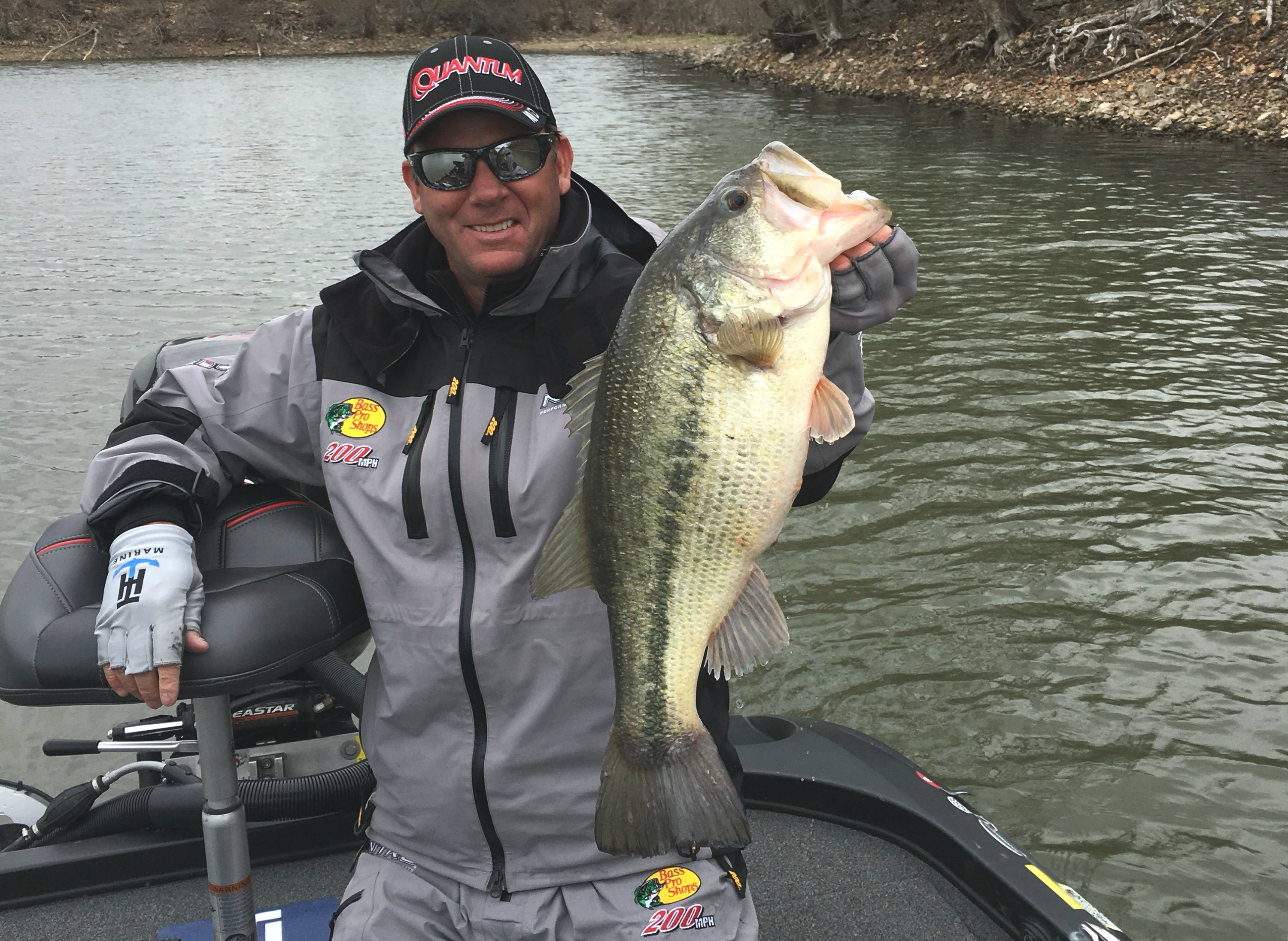
The shallow fall bite is either gone or fading fast throughout most of the country, but that doesn’t mean you need to put away your spinnerbaits.
It’s a time when fish leave the backs of creeks and are starting to transition to winter areas as they follow the shad out toward deeper water.
One of the great things about fishing this time of year is the fish aren’t nearly as selective as other times of the year and they’re getting less pressure. Hunting season has drawn a lot of folks off the lake and the weather can be nasty.
Of course, the Alabama rig has dominated the bass angler’s radar the past few years because it is so efficient. But not everyone likes throwing that cumbersome A-rig, and I’m here to tell you that the spinnerbait gives you a more conventional option. It’s so efficient at imitating bait at all levels, and I promise you that slow-rolling a spinnerbait is hard to beat this time of year.
I’ve caught some giants doing that following the fall, shallow-water feeding frenzy. The bass are still eager to eat and keying on big shad and that spinnerbait can fire them up.
This is time when I prefer throwing a big profile spinnerbait; a heavier lure with larger blades so I can fish it deeper and slower.
While early winter bass tend to move a little deeper on most lakes, they will feed on 3- to 5-foot flats along steeper banks of highland reservoirs.
In water like that, I will use a 1/2-ounce willowleaf/Colorado spinnerbait combination but will change out the willowleaf to a No. 6 or No. 7 blade that adds to the overall profile. If fishing grass, I’ll use tandem willowleaf spinnerbaits.
This is a legendary late fall tactic on places like Lake of the Ozarks and Table Rock lakes. And with all the rain the country has been having, the water will dirty up and hold the fish shallower.
Now, if I’m fishing deeper, I will go to a 3/4 or 1 ounce and use the larger blades.
I also prefer a bait with a full skirt and will add a large profile trailer to add to the profile and bulkiness that allows me to fish it slower. One of my favorite trailers late in the season is a 7-inch ribbontail worm.
I prefer brighter colors (white or white/chartreuse) in dirty water or a black spinnerbait with gold blades in cleaner water this time of year.
Locating early winter transitioning bass requires you find the shad, either with your electronics or watching for gulls, herons, ospreys or eagles. If the fish-eating birds are present, the shad are, too. Key spots to check are major points inside or outside the creeks and bridge corners – areas with structure providing deep-water access.
One thing to keep in mind – the blustery the day the better they bite this time of year. I like to be on the lake when there’s a front moving through, or if it’s cloudy, rainy or even snowing.
Those are the days when most anglers stay home, but you’ll have the lake to yourself and the bass are eager to cooperate.
Remember, it’s all about the attitude!

